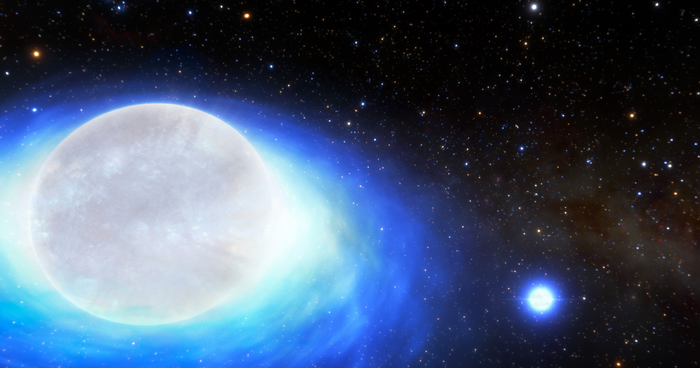Feb 02 2023
Possible Kilonova Progenitor System Identified
 The universe is a big place, and with a variety of powerful telescopes astronomers can see it all (at least the visible universe). This means we can potentially see extremely rare events. One such rare event is a kilonova, a type of nova that results from two neutron stars or neutron star and a black hole merging together. Even more rare – astronomers may have recently identified a system that will one day create a kilonova, in the Milky Way. They estimate that there may be only ten such systems in the entire galaxy.
The universe is a big place, and with a variety of powerful telescopes astronomers can see it all (at least the visible universe). This means we can potentially see extremely rare events. One such rare event is a kilonova, a type of nova that results from two neutron stars or neutron star and a black hole merging together. Even more rare – astronomers may have recently identified a system that will one day create a kilonova, in the Milky Way. They estimate that there may be only ten such systems in the entire galaxy.
To quickly review, the term “nova” means “new” in latin, because they were seen as new temporary stars that appear in the sky, last a few weeks and then disappear. A basic nova results from a white dwarf star with a close companion star. Over time the white dwarf may gravitationally pull hydrogen from the outer atmosphere of the companion star, until enough of it collects on its surface to kickstart runaway nuclear fusion, resulting in a significant brightening of the white dwarf. This is generally not explosive or destructive, and a single white dwarf can potentially go through many such novae.
There are a couple of types of supernova. The classic type of supernova results from the collapse of the core of a sun that had burned through its fuel. This rapid gravitational collapse results in an explosion of radiation, throwing off any remaining outer material and leaving behind a stellar remnant – neutron star or black hole. The type 1a supernova results when a white dwarf draws enough material from a companion that it starts to have fusion in its core which rapidly burns through its fuel and collapses to form a supernova. A hypernova results from a very large star (30 or more solar masses) undergoing core collapse and leaving behind a black hole. (I’m skipping a lot of detail but this is basically how it breaks down.)
A kilonova is somewhere between a nova and a supernova in terms of power. This is a flash of gamma rays and other frequencies of energy that result when two neutron stars, or a neutron star and a blackhole, collide. As the name implies, a kilonova is about 1000 times as bright as a nova, and a supernova is about 10-100 times as bright as a kilonova, and a hypernova is 10-100 times as bright as a supernova. Why are kilonova so rare?
This is a question astronomers have been trying to answer, but one idea is that it is simply very rare to have two neutron stars in the same binary stellar system. This is because the supernova that creates a neutron star would likely expel a close companion star from the system. Conditions would have to be just right to leave behind two neutron stars in a close-enough orbit that they will eventually spiral into each other, resulting in a kilonova.
One possible scenario is that one companion star mostly strips the outer layers of gas from its companion, which still has enough mass left behind to go supernova when its core collapses. This results in a weak supernova – with enough mass to leave behind a neutron star but not enough force to eject its companion. The process then reverses, with the neutron star stripping gas from its companion so that it also experiences a weak supernova at the end of its life. We are then left with two neutron stars in close orbit, and eventually they radiate away enough of their gravitational energy that they spiral in and collide.
As I said, astronomers can spin extremely unlikely scenarios, because given enough space anything that is possible (even if extremely unlikely) will happen somewhere. This kind of system may exist in only one in 10 billion systems, which means there are about 10 in our own galaxy. The recently identified system is CPD-29 2176, located about 11,400 light-years from Earth. Using SMARTS 1.5-meter Telescope astronomers have detected one neutron star and a close companion that is being stripped of its outer layers and therefore may also result in a weak supernova, leaving behind two close neutron stars. The resulting kilonova will not happen for millions of years, so it will take a long time to confirm astronomer’s predictions.
The discovery does allow astronomers to investigate predictions about how such systems emerge and behave. If enough such systems can be identified at different stages of their life, a fuller picture can emerge. This is generally how astronomers study the lifecycle of stars. They can’t observe a single star experiencing even a brief lifecycle, because they occur on a time scale of a hundred million year to trillions of years. So we have to look at different stars at different times in their life (at least up to the oldest stars at 13 billion years or so) and put them together. This includes what happens at the end of their life, including the various kinds of nova. This discovery also adds one more puzzle piece that allows astronomers to understand very energetic events that they observe in the universe.






